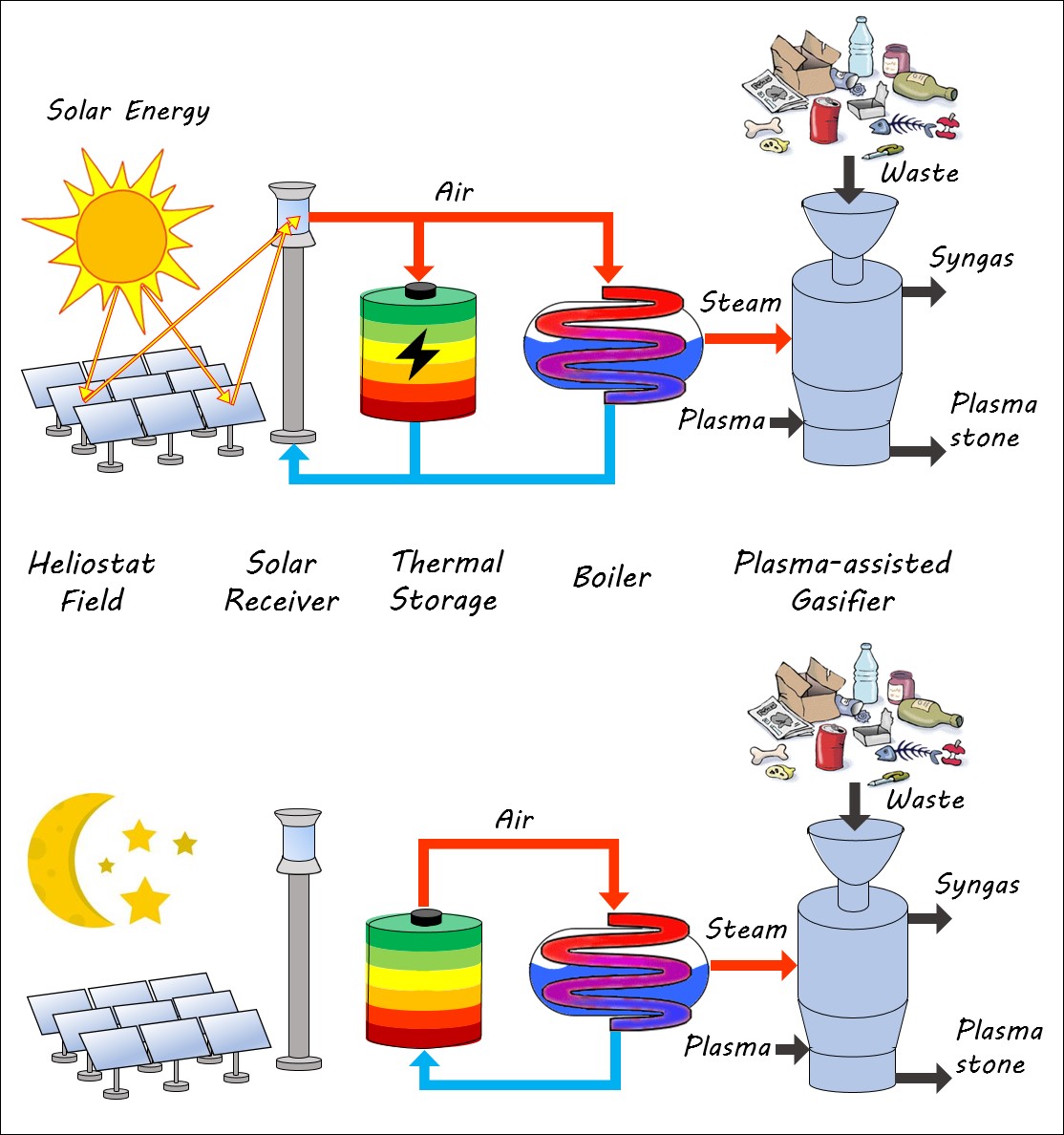“The harness of waterfalls is the most economical method known for drawing energy from the sun” stated the eclectic inventor Nikola Tesla. Both the Greeks and the Romans had realised that as they were already using hydraulic energy to grind wheat in watermills. This usage continued since up to the point that Western Europe and the United States are now almost exploiting all of their available hydroelectric resources [1].
As a reminder from last week’s blogpost, to prevent the world from breathing foul toxic gases, waste has to be eliminated. We mentioned that a possibility was using gasification but this requires a large amount of heat. Where can this heat be extracted from? As hydraulic resources are running out, there is a need for another source of energy, preferably a renewable one to ensure sustainability. The vast majority of renewable energy is derived from the sun via one or several conversion processes (from the original form to thermal energy). Why wait any longer using longwinded conversion methods and not directly utilise the sun for gasification? We know how to make electricity from sunlight using solar panels, now, we should find a way to convert the sunlight into heat instead. This is how Concentrated Solar Power (CSP) plants came about, enabling sunlight to be converted to heat, which is then further used to generate power or drive thermochemical processes for the production of fuels and materials.
![Figure 1: Concentrated solar thermal plant [2]](/wp-content/uploads/2018/06/Figure-1-Concentrated-solar-thermal-plant.jpg)
Figure 1: Concentrated solar thermal plant [2]

Figure 2: Solar-driven gasification of waste
The solar receiver and the thermal storage unit are being developed at the Professorship for Renewable Energy Carriers (PREC) of ETH Zürich. The goal is to perform the entire process energy-efficient and cost-effective using concentrated solar energy. As Christopher Columbus said, “Following the light of the sun, we [are leaving] the Old World” and going into a new era!
References
[1]: The Open University. Energy resources: Hydropower. [Internet] 2016 [cited 15 June 2018]. Available from:http://www.open.edu/openlearn/ocw/mod/oucontent/view.php?id=2442&printable=1
[2]: DLR. It is all in the mix – study of the efficiency of solar technologies presented. [Internet] 2016 [cited 15 June 2018] Available from: https://www.dlr.de/dlr/en/desktopdefault.aspx/tabid-10550/951_read-19762#/gallery/24711
About the Authors:

Marco Gigantino is our ESR8. After studying chemical engineering in Italy and in the UK, he moved to Switzerland to start a PhD at ETH Zürich. He focusses on thermochemical storage of solar energy for the application of gasification of refuse-derived fuels (RDF). You can contact him at . |

Léa Lurois: She is our ESR7. She comes from northern France and, after living in the UK and the US, she moved to Switzerland as a PhD candidate at ETH Zürich. Her main activity is related to the collection of solar thermal energy using a solar receiver. You can contact her at . |


